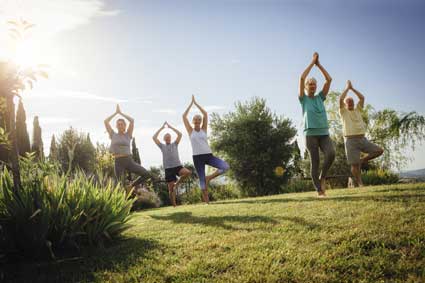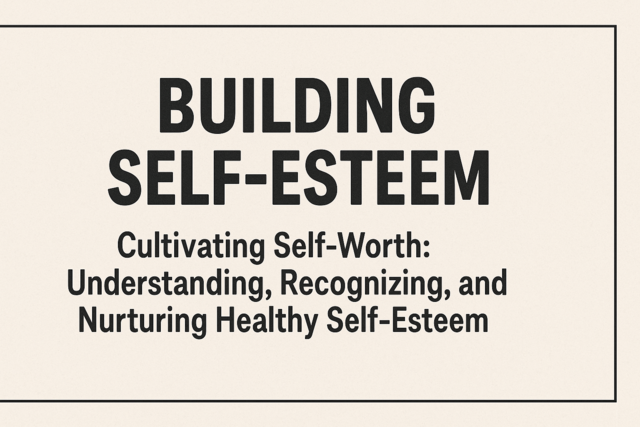Other excellent techniques to promote emotional healing are to incorporate art, create a healthy emotional environment, and engage in meditation. While creative individuals may naturally feel drawn to these concepts, people who are not creative by nature can easily achieve just as much, if not more, help from engaging in these activities.
Art therapy has long been established as having a tremendous value. Many counselors specialize in this type of therapy; but even if your counselor does not (or you choose not to see a counselor), engaging in creating and enjoying art can be therapeutic all by itself. Creating an emotionally healthy environment, in practical terms, is easily intertwined with art therapy. The overall concept is that engaging in activities where you express yourself creatively and surround yourself with expressions of who you are, and how you feel, can have tremendous healing impact.
When you first begin creating art, painting is a natural, inexpensive, and easy expression. You don't have to have fancy paints, or even real canvases; craft paint and recycled paper, wood, and even cardboard will suffice. The most important thing is that you just start doing it. Don't worry about how it looks, or if it is coming together in a visually pleasing way; the idea behind art therapy is that you are expressing your feelings, even the painful ones, as you create art. Focus on your feelings and on the physical act of creation, rather than on the results. You can continue to do this as much as you want, even focusing on different emotions with different paintings.
The more you do, the better it will start to look, and you eventually may find that you want to keep some of your artwork. Your own art therapy might serve as the first step toward creating a healing environment. Research has shown that children in school performed better when their physical environment was visually pleasing; people in all walks of life have found the same to be true. Just as it is usually easier to keep clean a home that is well decorated, it is easier to keep emotionally healthy in an environment that pleases you visually.
While your own art therapy may be a good place to start, there are many other things you can do to promote the quality of your physical environment. If you find that you are creative (or more creative than you thought), consider making other art, or engaging in do-it-yourself projects. It is a different kind of art therapy to create items and art to be in your home; rather than expressing your feelings during these projects, you will instead focus on how good it feels to create and invest in something that is for your own pleasure. Then, after you have created it, you will get to enjoy and delight in the beauty of your environment on a daily basis.
If you aren't sure where to start, sit down in the place where you spend the majority of your time. Imagine what you would like that place to look like. Is your style minimalist, modern, bohemian, or something else? What colors are pleasing to you? Are there certain objects -- like lamps, vases, books or something else that make you happy just to look at them? What would the interior of your room or home look like if money were no object? Once you can establish what pleases you, begin identifying what you can do yourself to create the environment you want.
Meditation itself consists of taking a period of time (which can be brief), isolating ourselves, and trying to clear our mind. Sometimes it is helpful during meditation to visualize your mind emptying out all of those feelings, anxieties, and thoughts you have that keep you distracted or deterred from being emotionally healthy. Once your mind is empty, begin to focus on the emptiness. As your mind clears, you should begin experiencing a level of calm and peace. If you find this difficult, just keep working at it. It takes time to create a meditative state. But if you keep at it, you're likely to discover that your emotional well-being is only one aspect of your life that will benefit from meditation. Physiological problems, such as high blood pressure, chronic pain, and other conditions can be improved through regular meditation. Best of all, through meditation, all of this can be achieved for free.
One of the many ways that you can promote emotional healing within yourself or someone else is to encourage a social life and activities that are positive. Unfortunately, many people find that while experiencing emotional trauma or loss, they have (to varying degrees) abandoned much of their social life. Sometimes it is all that we can do to get up in the morning when we're struggling emotionally; supportive friends and family will understand our absence. But as we are achieving more and more emotional healing, it is important to start reintegrating ourselves into society. Volunteering or engaging in positive activities that impact other people has proven to be a tremendously healing technique.
When this occurs, it is often helpful to communicate with the person that you acknowledge their feelings and are prepared to demonstrate your love and support for them. In many cases, simply listening to how they feel, and how they have been hurt by you, is enough. It can further help rebuild the damaged relationship if you share with them some of what you have been going through (bearing in mind that you don't need to share too deeply or go into much detail if you don't want to), and telling them you want to hear about what they have been going through. As they share their struggles, you will have an opportunity to demonstrate your support and love for them.
Sometimes, unfortunately, the relationships in our lives become seriously damaged while we're focusing on ourselves. When this occurs, the first thing to do is to make an honest assessment about how important this relationship is. In general terms, if this is a spousal, parental, or other major type of relationship, it may be worth the time and effort you will need to put into repairing the relationship. If the relationship is with a friend, or even a family member, where it does not matter tremendously to you or has been emotionally unhealthy for you, you may decide not to repair the relationship. This can be a very difficult decision to make and is best made after initial overtures are rejected.
One of the things you can do that incorporates socializing, but is not contingent upon other people's feelings, is volunteering. It has been clearly established that becoming active and involved in something that benefits other people can aid in our own emotional healing. If you like, you can volunteer for something that is related to the emotional trauma or loss that you endured; for example, a woman who has suffered a miscarriage may work with a local hospital to provide care packages for other women who go through the same thing. If you would prefer, or think that it is better for your emotional health to volunteer in a related capacity, do so. There is nothing wrong with wanting to leave our emotional troubles aside while we give to others.
There are numerous ways to volunteer, numerous types of organizations you can work with, and you can invest as little or as much time as you would want or have available. Although you can volunteer online, to get the most out of your volunteer experience while healing emotionally, volunteer in an in-person capacity. Working with other volunteers can promote healthy socialization and may generate new friendships and positive, life-affirming relationships. Working with the people you are serving directly can also be very beneficial. Seeing the struggles of others can help us identify with people we thought were different, put our struggles into a new perspective, and incorporate positive communication between ourselves and others. In fact, there are many professionals who believe that acts of service are the single best technique to promote emotional healing within ourselves.

























